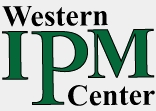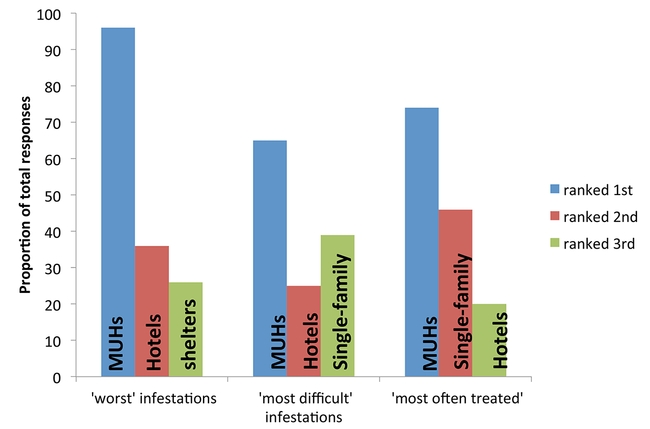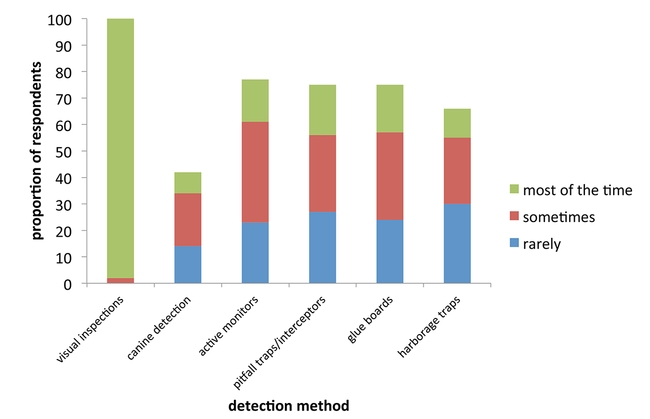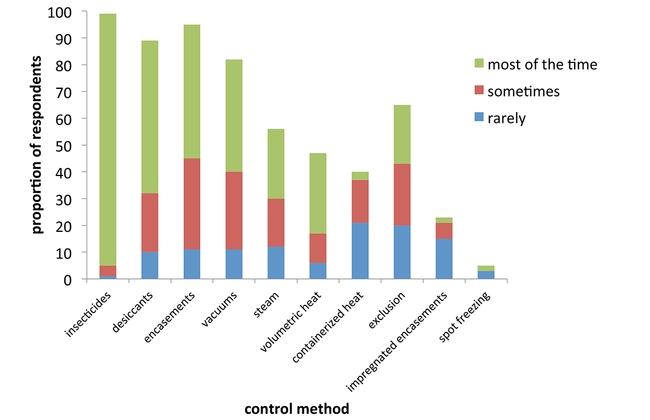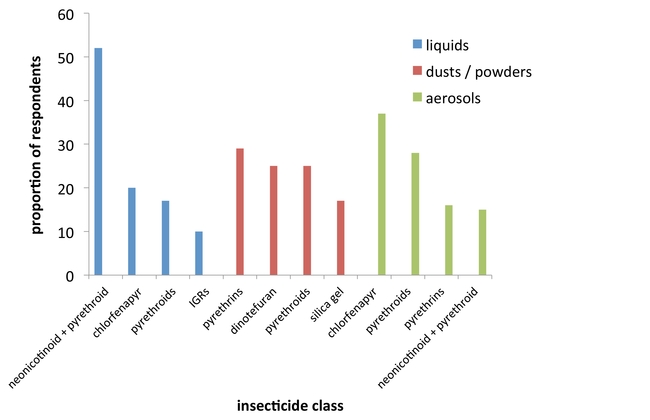[From the December 2015 issue of the UC IPM Green Bulletin]
Survey of professional bed bug management in multi-unit housing
Adults and nymphs of bed bugs.
Researchers and policymakers recognize the need to address this challenging situation and to design valuable and timely extension and applied research programs in order to assist pest management professionals (PMPs) engaged in this work. Data on bed bug incidence and management approaches in the western United States are lacking as compared to those in other regions. Through use of an online survey, the Western IPM Center's Bed Bug Work Group has recently assessed the current prevailing bed bug management practices in use, the most challenging aspects associated with bed bug management in MUHs, and the self-reported needs of the industry that may improve bed bug management outcomes in these environments. A total of 114 individual PMPs completed this survey, with over 76% of these responses coming from the western United States. Below is a summary of responses to the survey.
Attitudes, beliefs, and observations
Figure 1. Locations reported to harbor the worst bed bug infestations, to be the most difficult in which to manage bed bugs, and to be the most often treated by respondents’ companies.
Most respondents (73%) believed that bed bug infestations had increased in 2014 as compared to 2013 while some (22%) believed that the levels of infestation had not changed during this period. Nearly half (49%) of all respondents considered summer to be the season with the most calls for bed bug services, while another large proportion (44%) reported no differences between seasons. Most (57%) of the respondents in this survey did not believe they had encountered pesticide resistance in the field.
MUHs, the focus of this survey, were considered by most respondents to harbor the worst bed bug infestations, to be the most difficult locations in which to manage bed bugs, and to be the locations most often treated by their companies (Figure 1). Hotels / motels and shelters were also believed to harbor high density infestations. After MUHs, hotels / motels and single-family homes were also regarded as difficult locations in which to manage bed bugs as well as locations most often treated.
Considering MUH environments, respondents were asked to list what they considered to be the biggest customer-oriented challenges to providing bed bug management services. Common themes reported included ‘lack of preparation', ‘clutter', ‘lack of client cooperation', ‘reintroductions', ‘lack of education', ‘misinformation', ‘high costs', and ‘language barriers'.
Behaviors and practices within MUH environments
Figure 2. Bed bug detection methods reportedly used by respondents, with proportional frequencies of use.
According to the survey, 46% of respondent companies do not offer regular monitoring services and will only know bed bugs are present after a tenant complaint or random detection by MUH staff. Visual inspection was reported as the most common monitoring method used; 98% of respondents reported employing this method ‘most of the time'. Such inspections are quite time-consuming and labor intensive, but can be accurate at detecting some infestations. Small and / or new infestations, however, may often be missed using this method. Additional detection methods were ‘sometimes' used (Figure 2), including active monitors (38% of respondents), glue boards (33%), pitfall traps / interceptors (29%), and harborage traps (25%). Canine detection, potentially the most accurate and efficient manner in which to detect small infestations in complex environments, was reportedly ‘never' used by 58% of respondents, although 20% reported employing such services ‘sometimes' and 8% claimed to use canines ‘most of the time'.
Figure 3. Bed bug control methods reportedly used by respondents, with proportional frequencies of use.
Once bed bugs had been detected, or perhaps in reaction to complaints, insecticide applications were reported as the most common management tactics (Figure 3), with 94% of respondents reporting their use ‘most of the time'. Other tactics used ‘most of the time' included desiccants, mattress / box spring encasements, and vacuums. Several nonchemical management tactics; including spot freezing, heat chambers / containers, volumetric heat, steam, and exclusion services; seemed far less common, with the largest proportion of respondents reporting to ‘never' use them. Of those respondents reporting the use of insecticides, 81% used liquid formulations, 71% used dusts, 62% used aerosols, 23% used fumigants, and 14% used impregnated resin strips. Figure 4 illustrates the most common active ingredients and formulations reportedly used by respondents.
Figure 4. Common active ingredients within insecticides reported as used ‘most often’ by survey respondents, separated by formulation (liquid, dust / powder, aerosol).
Education is an important component of an IPM program. Clients and employees need to be able to identify pests early in an infestation and to avoid behaviors and practices likely to lead to pest infestations; this is especially true when considering bed bugs in MUHs. Management and staff at MUHs were reportedly less likely than pest control company employees to have been educated in this way, and tenants at MUHs rarely received these educational programs. The educational component of bed bug IPM appears seems to be one in which the pest control industry may be able to improve.
In summary, PMPs reported substantial use of many different bed bug detection and control methods, though visual inspections and insecticide applications were clear mainstays. Regular monitoring programs and the use of several complementary control methods are primary components of urban IPM, advocated for strongly by members of our Work Group. We will consider these data as we work collaboratively with regional PMPs to design effective IPM programs for bed bugs in MUHs.
For more information
To read the entire summary of this research, please visit the online periodical Pest Control Technology.
For more information about bed bugs, see the UC IPM Pest Note: Bed Bugs.

